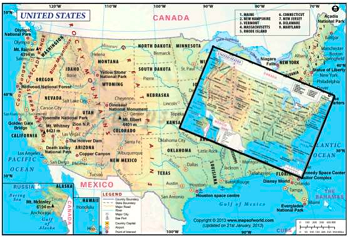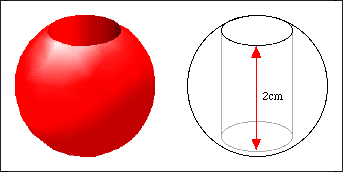Batch 3 - Class 176 - Fixed Points
Attendance Arjun, Kushagra, Anshi, Anishka, Arnav, Damini, Vaazisht, Aashvi
Class puzzles
- Take a cup of water. Then stir the cup and let it settle back. Do you think there is any point (or particle of liquid) that is exactly at the same place that it was in the beginning?
- Take two identical sheets of paper, one on top of other. Crumple one piece of paper and throw it back on top of the bottom sheet. Do you think there could be a point in the crumpled top piece of paper sitting directly above its matching point on the bottom piece of paper?
.png)
- Let kids think through the problem and come up with positive or negative answers. Let them reason those out.
- Lets consider a one-dimensional variant. Lay out a straight rope from your foot to the end of wall. Every point on the rope is some distance away from your feet. Now crumple the rope and throw it back on the floor. Is there any point on the rope which is at the same distance from your foot as initially?
.png)
- Lets get away from crumpling. Lets take a map and a smaller replica of the map. Lets throw the smaller map on the larger one. Is there a location which sits at exactly the same point? Or better still, if we keep the world map on our table, is there a point on the map that denotes exactly the location on actual earth it is at?

- Lets reduce the above problem to one dimension. Take a ruler, and then a smaller copy of the ruler. Place them side by side, so that the smaller rules is wholly inside the larger one. Is there a point that reads the same value?
.png)
- Lets start with the ruler. Draw arrows connecting the same point on larger to smaller ruler. What do you observe? The connecting line goes from pointing towards right to pointing towards left. This happens continuously - is there a point at which this line must be vertical? What is true of that point? Another way to look at it is to graph it, by plotting the original position of initial and final points - since the mapping is linear, the line connecting these points must denote all points, and it must intersect the original diagonal.
.png)
- Thinking about the map, can we intuitively think of that as similar movement in two directions. Presumably there is a point that doesn't move at all? Show it to kids by drawing the arrows. For each "horizontal" on the original map, the arrows will start out rightwards and end up leftwards so that there is at least one vertical arrow. Across horizontals, such vertical arrows are continuous, and start out going upwards but end up going downwards, so there must be some point where the points coincide.
- Lets think about the rope. Can we draw a graph similar to what we did for the ruler here?
.png)
- Ok, back to the crumpled paper. What do you think of it now? Can we think of it as the crumpled rope in two dimensions, and apply a logic like we did to extend the ruler to the map?
- Note that there is a more detailed proof in the references. Kids may go through it if they'd like to.
- What would happen in the cup of water we took initially? That is simply the 3-D analogue to the problems above. Now think about each dimension mapping through arrows...
- Brouwer's Fixed Point Theorem
- For any continuous map from one connected region to another has at least one point that does not move during the mapping
- What if the cup was filled with grains of sand and not liquid? Would this still hold? Why/ why not?
- No. The fundamental assumption is that the points are moving continuously. With discrete points, that breaks down.
- Take an example of grains of sand along a ruler - you can pretty much transpose things randomly and not get a common point
- Will Brouwer's Fixed Point Theorem apply to the following shape? Why/why not?
.png)
- No. Just rotate the disc onto itself. The theorem only applies to convex continuous shapes
Homework Problem:
- There is a component made of solid copper sphere with a cylindrical bore through it. The length of the bore is 2 cm. How much copper is used in this component?

- Answer: 4/3(pi) - Note that you don't need any other dimensions to determine the answer
References:
Professor Stewart's Cabinet of Mathematical Curiosities, Ian Stewart